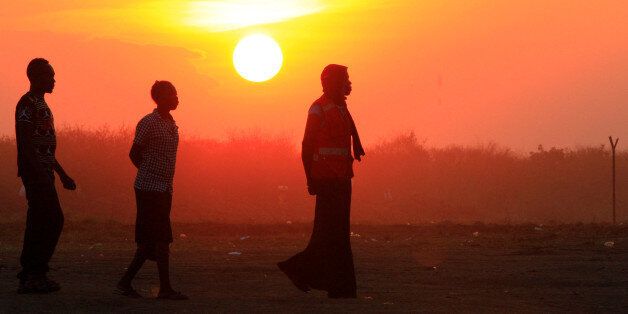
It's 1984. Not the fictional dystopian wilderness of George Orwell - it's far worse. We're on the plains of Ethiopia, where the bodies of adults and children compete for space with the corpses of cattle. You could write a book on the cause of this famine and still come up short. A perfect storm of record low rainfall, politics, and conflict has wiped out 1 million people.
Shocked by the scale of the crisis and compelled to act, the world stood up. The Live Aid concerts alone raised more than £50 million.
Today, in 2017, East Africa faces another perfect storm... South Sudan, its short five-year history inked in conflict and political unrest, is now fighting a third front: drought. Famine has been declared in some areas of South Sudan and a food crisis in Kenya, Somalia, and Ethiopia. More than 20 million people - including millions of children - are in urgent need of food.
But something's changed in the last 30 years. It appears that the impetus to act in the face of such crises is diminishing; the human shock of poverty and disaster numbed by the frequency with which it hits our 24-hour news streams. And more worrying than the rising tide of apathy is the increase in negativity seen when a crisis hits.
Many people have shown their support, but across Plan International's websites and social media channels, our East Africa appeal was met with a level of sustained hatred and bile aimed squarely at the people affected by the crisis and those working tirelessly to help.
The caustic nature of the dialogue and sheer volume of comments was shocking. Some people said they didn't see the point of supporting the appeal because they'd been donating for years and it hadn't made one iota of difference. They're wrong.
Building resilience
Far from being a simple handout to save lives in the short term, the worldwide support that zeroed in on Ethiopia in 1984 did something amazing. It built a level of resilience against future disaster. Humanitarian aid helped not just grow new food and replace livestock, but also build stronger infrastructure.
It improved school facilities, allowing the children who survived the famine to get a proper education, learn more about hunger and disease, and how to combat and overcome problems that affect them. It resulted in better healthcare facilities, and brought access to clean water closer to home.
The effect? The 2015 El Nino drought in Ethiopia was billed as the worst in 30 years. Yes, help was given in the short term to access urgent supplies, but the investments made over the last three decades and the work of the Ethiopian people and government meant the crisis never reached the proportions of 1984.
A race against a changing climate
The famine in South Sudan will not be the last crisis to hit East Africa. Not because humanitarian aid doesn't work, but because our climate is changing. Changing weather patterns will lead to reductions in agricultural productivity, inevitably leading to a greater risk of food shortages.
The more we help now, the more we build resilience within these countries to stand firmly on their own in the face of the inevitable crises and disasters that will affect them.
Donations to our East Africa appeal will not only provide life-saving emergency aid, but help people to help themselves. And as the citizens of York in the UK will tell you, having received a donation from the people of flood-ridden Mozambique after the River Ouse flooded 300 homes in 2000, a sense that you're not alone in a time of crisis is a powerful antidote to despair.